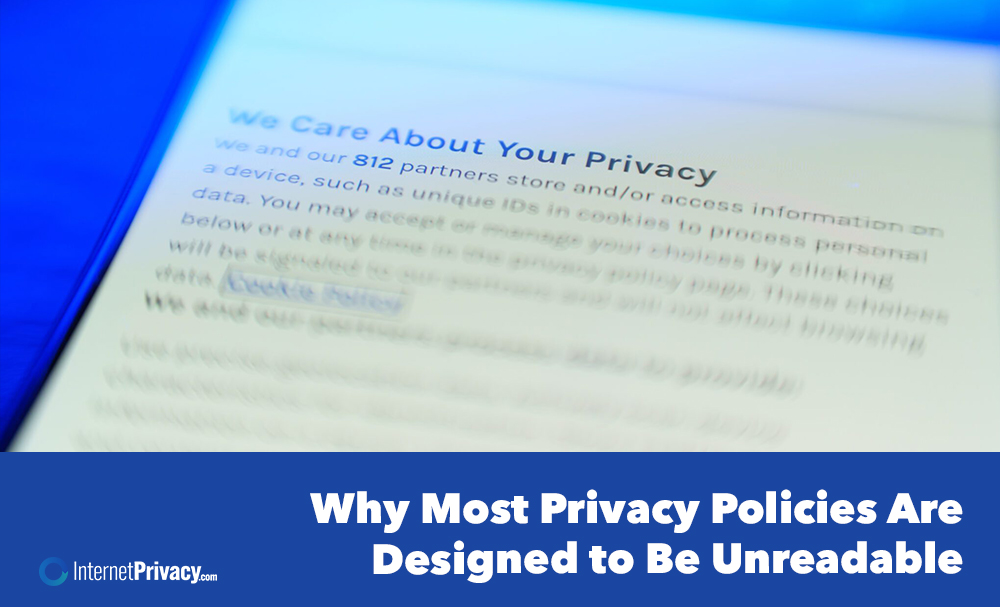Why Most Privacy Policies Are Designed to Be Unreadable

Privacy policies are supposed to inform users about how businesses collect, process, and store data. However, in practice, most privacy policies are dense, confusing, and challenging to read. From legal documents buried in sign-up pages to excessive jargon that masks the real intent, the very documents meant to protect user rights often fail to do so.
The Purpose of Privacy Policies
A privacy policy is a legal document that outlines how a company collects, processes, stores, and shares personal information. It’s a requirement under most data privacy laws, including the General Data Protection Regulation (GDPR) and the California Consumer Privacy Act (CCPA). These policies are designed to inform users about what happens to their data, whether it’s collected through mobile devices, email sign-ups, or interactions on a social media platform.
At their core, privacy policies are meant to serve users. However, in practice, they often serve as an internal document written for legal compliance rather than user clarity.
Why Are Privacy Policies So Hard to Read?
1. Legal Overload
Many organizations write their privacy policies to avoid liability rather than inform users. Legal departments draft these documents with clauses designed to comply with every applicable law, including federal regulations, international privacy frameworks, and industry self-regulation standards. The result is a privacy notice so dense with language about data protection laws and legal obligations that average users can’t make sense of it.
2. Vague or Ambiguous Language
Phrases like “we may collect data” or “we may share data with third-party services” give companies broad leeway but provide users with very little information. Users are often left wondering what personal information is actually collected, how data transfers work, and how long their data is stored in data centers.
3. One-Size-Fits-All Templates
Many companies use generic privacy statement templates designed to check boxes for GDPR compliance or CCPA notices. These policies reference legal concepts, such as data subject rights or fair information principles, without explaining them in plain language.
4. Length and Structure
Privacy policies can span thousands of words and encompass dozens of sections, including those on cookies, tracking technologies, data processing activities, marketing purposes, and third-party disclosures. Without summaries or visual cues, the document becomes nearly impossible to navigate, especially on a mobile device.
The Real-World Consequences
Unreadable privacy policies don’t just frustrate users—they erode trust. When people can’t easily understand how their data is collected or used, they’re more likely to disengage, opt out, or abandon the service altogether.
Key risks include:
- Misinterpretation of how consumer data is handled
- Failure to comply with privacy policy requirements from laws like the California Privacy Rights Act (CPRA)
- Legal liability for not honoring users’ rights to delete data, restrict processing, or access their personal data
Organizations that fail to define their privacy practices clearly may also face enforcement action from regulators, such as the California Department of Justice, or complaints from watchdog groups, including the Electronic Privacy Information Center (EPIC).
How Data Privacy Laws Contribute to the Problem
Ironically, laws designed to protect user privacy often result in the creation of complex legal documents. The General Data Protection Regulation, for example, mandates detailed disclosures on:
- Data collection and processing purposes
- Legal bases for processing
- Data subject rights
- Cross-border data transfers
- Contact information and mailing address for the data controller
While these are important for transparency, they also incentivize businesses to include every possible scenario to reduce risk, often at the expense of readability.
Similarly, the California Consumer Privacy Act and its update under the California Privacy Rights Act require businesses to disclose categories of personal information collected, the sources of data, how it’s shared, and the user’s right to opt out or request deletion.
Without clear guidance on user-friendly formats, many companies err on the side of overly legalistic language.
What Users Actually Need
Most users care about a few key things:
- What personal data is being collected (e.g., financial information, sexual orientation, device data)
- How their information will be used (e.g., for marketing purposes, financial activities)
- Who it’s shared with (e.g., advertisers, affiliates, service providers)
- How long will it be stored
- What rights do they have under privacy laws (e.g., to delete data, correct it, or restrict processing)
How Companies Can Improve Privacy Policies
1. Use Plain Language
Avoid complex legal jargon. Replace “data subject” with “you” and explain what terms like “data processing” or “third-party transfers” actually mean.
2. Summarize Key Points
Offer a short, plain-language summary at the top or include a “highlights” section that breaks down your data collection and privacy practices.
3. Make Policies Easy to Navigate
Add a table of contents, clickable sections, or an FAQ. Make the policy easy to read on both desktop and mobile.
4. Visual Aids
Use charts, icons, or infographics to explain how data flows through your system—from collection on sign-up pages to storage in data centers or sharing via Google Analytics.
5. Build a Dedicated Privacy Center
Some companies create a standalone privacy center where users can manage preferences, review policies, and access tools to exercise their rights.
6. Clearly Outline Security Measures
Explain the security measures your organization has in place to protect users’ data from unauthorized access, breaches, or misuse. Transparency about security practices builds trust and reassures users that their private information is handled responsibly.
7. Address Legal Requirements Transparently
Ensure your company’s privacy policy clearly states compliance with legal requirements and how these affect users. This includes informing California residents of their rights under the California Consumer Privacy Act and the California Privacy Rights Act, and explaining the organization’s privacy practices in light of stringent rules imposed by data protection laws.
8. Detail Collection Practices
Be explicit about the types of personal information collected and the methods of collection, whether through cookies, sign-up pages, or third-party services. Users appreciate understanding exactly what data collectors gather and why.
Conclusion
Most privacy policies are unreadable because they’re written for legal teams, not real users. But that’s changing. As public awareness grows and regulations like the GDPR and CCPA evolve, so must the way organizations communicate their data practices.
Clear, concise, and user-focused privacy statements aren’t just a compliance checkbox—they’re a competitive advantage. Businesses that make their privacy policies readable signal respect for user rights, transparency in their operations, and long-term commitment to data protection.
And in an era when users are increasingly engaged with online services and information, online content is more valuable than ever; trust is everything.





